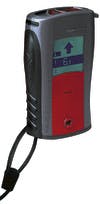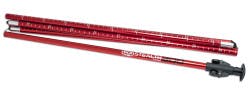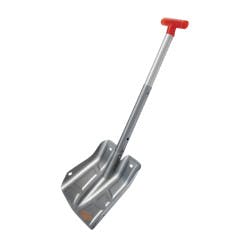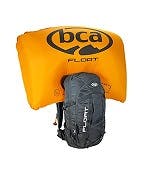dh
Gear plays a vital role in ensuring avalanche safety. It's a straightforward principle: if you're in avalanche-prone areas, you need the right gear and the know-how to use it effectively. Every member of your group must have an avalanche transceiver, a shovel, and a probe – having just one or two of these items isn't sufficient; you need them all.
While making informed decisions is the primary way to stay safe, having proper avalanche safety gear is crucial in case of emergencies. It works both ways – you need the gear to rescue others, and they need it to rescue you if needed.
Time is of the essence when someone is buried in an avalanche – minutes can mean the difference between life and death. Efficiently using your gear is essential to save time. To ensure you're well-prepared, take a training course and practice regularly.
Avalanche Transceiver

Pulse Barryvox
Avalanche transceivers are compact electronic devices worn close to your body. These devices emit a radio signal when you're on the move. In the event of an avalanche, those not buried switch their transceivers to search mode and follow the signal to locate a buried person.
Digital transceivers with three antennae, visual and audio displays, are the standard for their ease of use, speed, and accuracy. Some models include a marking function for locating multiple burials or transmitting "vital data" to assist in prioritizing rescues.
Analog (single-antenna) transceivers are outdated. Three-antennae digital transceivers outperform analog ones, particularly in finding single-antenna models. This is especially important when multiple people are buried close together.
Practice makes a difference – individuals who regularly practice achieve faster transceiver search times. Regardless of your chosen transceiver, consistent practice is essential.
Keep in mind that electronic devices, including jacket magnets, can interfere with transceivers. Check the section on Transceiver Interference for more details.
Probe

Transceivers guide you close to buried individuals, and probes help pinpoint their location. Avalanche probes assemble like tent poles. Inserting an assembled probe in a systematic pattern allows rescuers to accurately locate someone beneath the snow, saving precious time.
Probes come in various lengths, stiffness, and materials, affecting weight, durability, and cost. Opt for a reliable, sturdy mechanism and a non-stretch cable. A standard 240 cm probe works well for most rescues, while a 320 cm probe suits deeper snowpack areas.
Shovel

An avalanche shovel is designed for easy storage, with a detachable handle. Not all shovels are equal – choose a size that fits your pack but remember that bigger is generally better. Avoid flimsy shovels as they can break in cold conditions or while digging through hard avalanche debris. An extendable shaft eases digging and reduces fatigue. Proper shoveling techniques are crucial for effective use.
Transceiver Interference
Certain magnets in clothing closures can render a transceiver useless. Many transceivers have magnetic switches that can be triggered by nearby magnets, affecting their functionality. Even electronic compasses within transceivers can be sensitive to magnets and electromagnetic fields.
Interference isn't limited to magnets; metallic objects and electronic devices can also affect transceiver signals. Keeping these items at a distance is essential – around 20 cm when transmitting and 50 cm when searching.
Recommended Gear

Avalanche Airbag Packs
Avalanche airbags mitigate the effects of avalanches by reducing burial depth or preventing it altogether. They improve visibility and may offer some trauma protection. However, they're not foolproof – proper setup and deployment are critical. An airbag won't guarantee safety if you're swept into a depression where snow can bury you. Familiarity with equipment setup, like using the crotch strap, is vital to avoid risks.
Remember, even with an airbag, you still need a transceiver, shovel, and probe, and the knowledge to use them.
